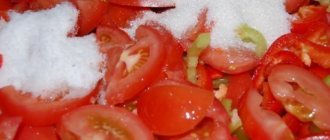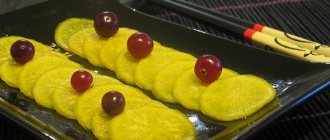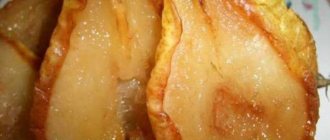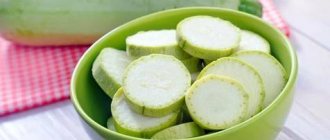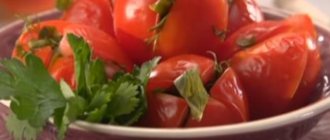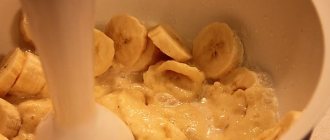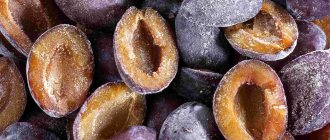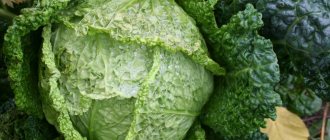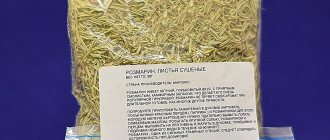Pickled daikon has become a popular dish among chefs. This radish is loved for its taste. It is hot, spicy and healthy. This vegetable is eaten both fresh and pickled. When fresh, it is stored in the cellar almost all winter. You can also preserve daikon for the winter by canning. Canned daikon is an unusual dish that suits any table and side dish.
This preparation is very easy to prepare at home. Cooking recipes are very diverse; they can be found on various websites or in cookery books. They have different specifics, but they are equally delicious.
Useful properties of the product
Daikon provides us with the greatest amount of useful substances in the summer. But the benefits of radish can be preserved for the winter through preservation. The list of minerals and vitamins that make up daikon: phosphorus, copper, iron, iodine, potassium, calcium, selenium, as well as a full complex of B vitamins, invaluable for human cellular metabolism. This root vegetable differs from many other plant products in that it does not absorb harmful substances from the air and soil, including the accumulation of heavy metal salts.
Despite all the benefits of radish, doctors advise using it with caution, both fresh and canned, for people suffering from ulcers and gastritis or having other problems with the gastrointestinal tract. Eating sweet Japanese radish is a good way to cleanse the body, get rid of toxins and reduce bad cholesterol.
If you eat it regularly, you can do without pharmaceuticals. The potassium and calcium contained in radish easily cope with the removal of toxins and excess liquid.
With half a glass of juice a day, you can restore calm and maintain a good mood, as this drink strengthens the nervous system. It not only relieves aggression, but also helps to lose weight. 100 grams contain only 18 kilocalories.
Prepare the necessary ingredients
Pickled daikon is a delicious side dish for meat and fish dishes, and can also be eaten on its own as a dietary snack. To prepare this dish, you need the main ingredients: daikon, marinade.
Japanese radish is grown in many European countries, the USA and Brazil. In cooking, it has many advantages: no special conditions are required for storage, and its beneficial qualities almost do not disappear over time.
It is correct to collect daikon from the garden in dry weather by pulling it out of the soil by the tops. Fresh root vegetables are placed in the refrigerator or left in a cool room, such as a basement or cellar.
To prepare pickled daikon, wash it in cold water using a special brush. Then the skin is removed, peeling them like carrots or potatoes, washed off again and left to dry. In order to chop the radish, you can use a special grater that allows you to get thin circles.
Canning
What can you cook from daikon for the winter? It can be preserved as a separate product or mixed with other vegetables. We'll look at two recipes that use only Japanese radish and spices.
In slices
Canned daikon for the winter is very easy to prepare and does not require a lot of ingredients.
For one hundred grams of fresh radish take:
- a teaspoon of salt;
- a pinch of saffron;
- one hundred grams of rice or apple cider vinegar;
- a tablespoon of sugar.
- Place the chopped, washed daikon pieces into a jar.
- Mix vinegar, sugar and salt.
- Pour three cups of boiling water over the saffron.
- Bring the water to a boil again.
- Strain and pour into the vinegar mixture.
- Pour the marinade into a jar with daikon.
- Seal and leave in a warm room for a week, then put in the refrigerator.
Preparations for the winter
Gardeners who grow daikon on their plots are often faced with the question of how to prepare this useful root vegetable for future use in simple home conditions. The best way to preserve the vitamins and minerals necessary for the body, as well as the taste of Japanese radish, is to pickle it. There are several recipes for preparing this root vegetable.
Cooking in a classic marinade
Pickled daikon according to the classic recipe is a tasty and original spicy dish. To prepare it, you need to take:
- 400 grams of daikon;
- 3 tablespoons sugar;
- 3 teaspoons salt;
- 60 grams of table, rice or apple cider vinegar;
- a pinch of turmeric, paprika, turmeric, saffron or other seasonings to taste.
To prepare daikon in a classic marinade, root vegetables must be washed well, blemishes cut off, dried and finely chopped. In Japanese tradition, it is customary to cut daikon into sticks. Before putting radishes into jars, the containers must be sterilized, doused with steam and left to dry on a clean cloth. You can place chopped root vegetables in dried jars, sticks side down.
Then you can start preparing the marinade. To do this, boil water in a saucepan, add sugar, salt and selected seasonings, and add vinegar. Cool the resulting marinade slightly, after which you can pour it into jars with daikon. Screw the lids on carefully, turn the container upside down and leave at room temperature for a week.
After this period, the pickled daikon can be stored in the refrigerator or cellar.
Japanese marinated
The process of preparing daikon in Japanese is almost the same as the classic pickling recipe, since its homeland is Japan. Residents of this country love this dish so much that they put it on the table both on weekdays and on holidays.
Read also: Recipe for fried honey mushrooms: making a tasty and healthy preparation for the winter
To give daikon a delicate sweet and sour taste, the Japanese resort to some secrets of its preparation:
- Root vegetables for pickling should be taken as fresh, young, without blemishes; when biting, they should crunch loudly;
- It is recommended to replace table vinegar with rice vinegar, it is softer;
- Saffron must be present as a seasoning in the dish.
Korean blank
You can pickle radishes in a tasty and simple way using the Korean daikon recipe. This delicious appetizer is appreciated by many lovers of oriental cuisine.
Korean daikon is prepared from:
- 2-3 medium Japanese radish roots;
- onion heads;
- ¼ cup olive oil;
- several cloves of garlic;
- 20 milliliters of table vinegar 9%;
- a teaspoon of coriander seeds;
- salt to taste;
- pinches of dried chili pepper.
Prepare a delicious spicy appetizer - pickled daikon
If you love Chinese radishes, try making pickled daikon, a savory and slightly spicy appetizer that goes well with a variety of dishes. Daikon contains a lot of vitamin C and very few calories - this is an excellent reason to include it in your diet as often as possible.
There are many options for pickling daikon using traditional Asian methods. Almost all of them contain ingredients that are difficult to find - rice husks, dried kombu seaweed and others. Resourceful Russian chefs have found simple ways to replace them, while maintaining the exquisite taste of the original pickled daikon radish, which the Japanese prepare for appetizers, sushi and rolls.
How to pickle daikon for appetizers
Daikon prepared in this way is ideal as an appetizer for hot boiled rice, potatoes, or as an addition to miso soup. For preparation you will need:
- fresh daikon – 2 kg;
- granulated sugar – 200 g;
- coarse salt (not iodized) – 50 g;
- dried peel of sour apples, persimmons, tangerines;
- hot red pepper;
- vodka – 250 ml.
The original recipe calls for the use of rice vodka with a strength of 25°. In the absence of this, the usual forty-degree, slightly diluted, will do. Also prepare a durable plastic bag.
Rinse the daikon well with cold water, trim off any too rough skin, and cut into large slices. Place all ingredients in a bag, mix and let dissolve. Release all the air from the bag, tie it and place it in a deep container under a press.
Turn the marinade packet over a couple of times a day so that the contents marinate more evenly. After just a few days, you can try the finished daikon.
Fans of more vigorous snacks can keep the marinade under pressure for another 2-3 days. Store the product in a clean glass jar, covered, in the refrigerator.
Marinate daikon for sushi and rolls
For lovers of national Japanese cuisine and sushi, a recipe for pickled daikon will come in handy. This product is often included in the original recipe, and it is not always possible to find it on sale. Let's prepare it ourselves. We will stock up on the following products:
- daikon – 200 g;
- granulated sugar – 50 mg;
- salt (iodized is suitable) – 10–15 mg;
- rice vinegar (6%) – 200 ml;
- ground saffron - a couple of pinches.
We cut the washed daikon into strips 8-9 cm long. A standard sheet of nori is about 18 cm long, 2 slices will fit into it. Place chopped daikon in cleanly washed half-liter jars and prepare the marinade separately.
Pour 3 tablespoons of boiling water into a small ceramic cup and pour saffron into it. Stir and let it brew a little. Meanwhile, put all the other ingredients in another bowl, dissolve and add saffron infusion to them.
Fill the jars with daikon with the prepared marinade, close with tight lids and leave in a warm place for a week. Then we move the jars into the refrigerator for long-term storage.
Daikon in Korean
This simple but extremely tasty appetizer will appeal to all connoisseurs of Japanese cuisine. To prepare pickled daikon in Korean you will need:
- fresh daikon - 2-3 whole root vegetables;
- olive oil - a quarter cup;
- onion – 1 large head;
- garlic - a few cloves.
- coriander beans – 1 teaspoon;
- white vinegar 9% - 20 ml;
- chili pepper is added as desired, no more than 1–2 pinches;
- salt (not iodized) to taste.
We grate the washed, peeled daikon on a special Korean grater.
Chop the garlic and grind the coriander in a mortar and salt. Add pepper and vinegar. Finely chop the onion and simmer in heated vegetable oil.
Let the onion cool slightly and pour the oil in which it was fried into the marinade with spices. We don't need the bow itself. Place the chopped daikon into the prepared filling, mix and let it brew. In a few hours, the delicious spicy snack will be ready.
Daikon marinated in this way goes perfectly with beef, fish, ham sandwiches, and simple side dishes.
Recipe for making pickled daikon for the winter at home
Pickled daikon has become a popular dish among chefs. This radish is loved for its taste. It is hot, spicy and healthy. This vegetable is eaten both fresh and pickled. When fresh, it is stored in the cellar almost all winter. You can also preserve daikon for the winter by canning. Canned daikon is an unusual dish that suits any table and side dish.
This preparation is very easy to prepare at home. Cooking recipes are very diverse; they can be found on various websites or in cookery books. They have different specifics, but they are equally delicious.
How to pickle daikon
Since daikon does not have its own distinct taste and smell, the vegetable is able to well absorb various aromas of herbs and spices.
Therefore, there are different variations of recipes for this dish among different Asian peoples. The most famous recipes for pickled daikon in Korean, since they usually use the maximum variety of spices. The result is a dish that is sometimes impossible to tear yourself away from. These recipes are so popular that many even call daikon Korean radish.
For pickling, you can use any variety of daikon. In Japanese, daikon translates as “big root,” and, indeed, the vegetable slightly resembles a huge carrot, but only white. Usually the vegetable is cut into small slices; their thickness determines how long it will take to marinate.
To speed up the process of making pickled daikon, you can grate the vegetable. It looks especially beautiful if you grate it on a Korean carrot grater.
Attention! The marinating time ranges from two days to a week, depending on the size and thickness of the cut pieces.
In original Korean or Japanese recipes, rice vinegar is mandatory for pickling daikon. But it’s not always easy to get it, so you can use regular table vinegar, or at least wine or balsamic vinegar.
Store properly prepared pickled daikon in the refrigerator for up to two weeks. Therefore, one should not be afraid to prepare it in relatively large volumes.
Classic marinating
Gardeners often think about how to store daikon. Pickled daikon retains its beneficial properties, quality and taste best. To make daikon for the winter, you need to study the recipe and find out what products are needed.
To prepare the usual classic pickling, you need to thoroughly wash the vegetable and cut off all the flaws on it. Since this is a Japanese product, it must be cut as they do in this country: into cubes.
The jars are sterilized, doused with steam and dried on a cloth. Then place the daikon there, chopsticks down. Next, prepare the marinade. Boil water in a saucepan, add salt, sugar, saffron and other seasonings to taste. Then add vinegar.
Cool the brine a little and pour it over the daikon. Screw the lid tightly. Turn it over, then store it in the room for about a week, then put it in the refrigerator. You can also store snacks in the basement.
For 200 grams of daikon, you usually take 2 small spoons of salt, two large spoons of sugar, 30 grams of vinegar. You can use table, apple or rice vinegar. Seasonings include paprika, turmeric, and curry.
Pickling
The Japanese pickle radishes for single consumption and as supplies. Subsequently, pickled daikon is used for cooking. Such a product is known under the name Takuan, which was the name of the Japanese monk who, according to legend, in the sixteenth century proposed this method of preparing radishes for future use.
The recipe for pickled daikon is simple, but requires some time, because Takuan takes quite a long time to prepare.
- daikon root vegetables - the quantity depends on the volume of the dishes,
- fine table salt - to taste,
- brown granulated sugar - to taste,
- hot red pepper - to taste.
The Japanese also use:
- dried persimmon petals,
- rice bran,
- kelp leaves, sea kale,
- green daikon leaves.
- Root vegetables are thoroughly washed and hung in the sun to dry.
- After the radish becomes flexible (four to six weeks), they begin to pickle it.
- Add salt, sugar, pepper, rice bran, radish and seaweed leaves, and persimmon petals to a bowl with daikon.
- They put pressure on it and leave it for several months.
Attention! Properly pickled ready-made daikon acquires a pleasant yellow color.
Takuan is used in many favorite rolls and sushi, it is also added to soups and stewed with meat, seafood or other vegetables.
Many people ask whether it is possible to pickle daikon quickly. Yes, our fellow citizens came up with a recipe for marinating with the national drink for this.
- Daikon - 2 kg.
- Sugar - 200 g.
- Salt - 50 g.
- Vodka 250 ml.
- Dried peels of apples, persimmons, tangerines.
- Red capsicum.
- Add all marinade ingredients to a strong plastic bag.
- Cut the unpeeled, washed daikon into cylinders 10 centimeters long and split them in half or into 4 pieces.
- Place the prepared radishes in a bag.
- Release the air from the bag, tie it and put it under a press.
- Shake the bag periodically (3 times a day) for better effect.
Preservation in Japanese
Cooking pickled daikon in Japanese is no different from the classic recipe, since this dish originates from Japan. In this country it is constantly marinated for any event. If you want it to be as tasty as there, then the radish must be young, strong, and fresh. Instead of plain vinegar, add rice vinegar. It's softer.
And be sure to season it with saffron for flavor.
The daikon is tender, sweet and sour, and has a crispy taste. Those who try it once are unlikely to ever be able to tear themselves away.
How to pickle daikon with saffron
Saffron is truly a royal spice that can give pickled vegetables a unique taste and aroma.
But in the recipe for pickled daikon in Japanese, saffron is necessarily used, and in this case there is no need to add any other spices to the dish.
- 300 g daikon;
- 100 ml water;
- 225 ml rice vinegar;
- 1 g saffron;
- 120 g sugar;
- 30 g salt.
- First, the so-called saffron water is prepared. To do this, 1 g of saffron is diluted in 45 ml of boiling water.
- The root vegetable is peeled and cut into thin long bars, which are placed in small glass jars.
- Water is heated to 50 °C, salt, sugar and rice vinegar are dissolved in it. Add saffron water.
- The resulting marinade is poured into root vegetables in jars, covered with lids and placed in a warm place for 5-7 days.
- Store in the refrigerator for about 2 months.
Korean blank
Preparing pickled daikon in Korean will pamper lovers of spicy dishes. It is fragrant and incredibly useful in the winter cold.
- Daikon, about 1 kilogram;
- Salt, 3-4 small spoons;
- Sugar, to taste;
- Vegetable oil, 100 grams;
- Vinegar, 100 grams;
- Any seasoning to taste;
- Whole garlic, divided into cloves;
- Hot pepper, a little.
Daikon for the winter in Korean has the peculiarity that it is prepared in a cold way. The radish itself is washed, peeled, and grated on a coarse grater. You can use a special grater for Korean products.
Garlic is mixed with grated vegetables. Take a convenient container, maybe a saucepan. In a separate bowl, mix oil and vinegar, add salt, seasoning and pepper. Typically, saffron, coriander, paprika, and hot pepper are used as seasonings. Pour the mixture over daikon and garlic. Leave for an hour. Next, mix. Place in jars.
In order for the snack to be stored all winter, it must be sterilized directly in the jar. Do this over hot steam for 15 minutes, or in hot water. Screw the lids properly and place them in the refrigerator. Jars usually use liter jars.
Recipe Features
To make Korean daikon more original, you can add a natural yellow or green dye to it. The result is a savory and spicy appetizer that is ideal as a side dish for fish and meat dishes. It is worth noting that daikon prepared in this way can be used to make sandwiches with ham or sausages.
The recipe is also suitable for cooking carrots and beets. If you put vegetables prepared in this way on one dish, you will get an original three-color salad.
Features and rules of marinating
The secret of proper marinating lies in a special marinade. You can allow long-term storage of pickled daikon if everything is done correctly. Then the lids won’t burst and mold won’t grow.
There are many ways to prepare brines, but mainly two are used: hot and cold. When hot marinating, you need to add more sugar, this is better for taste and for balance.
Read also: Dogwood liqueur: 3 recipes at home
When cold pickling, you don’t need to add sugar at all, but salt is required. Vinegar is also required. When hot pickling, it should not be mixed with very hot boiling water. It is usually added to jars or to cooled brine.
It is also important for successful pickling to use only fresh, crisp vegetables. It is important that the daikon is young. Seasoning also plays a role. You can add saffron, curry, parsley, basil, coriander. All this will only enhance the aroma and taste of radish.
Many people have been tormented by the question of how to keep pickled vegetables in the refrigerator all winter. The temperature in the refrigerator should be standard. Mold or swelling often occurs due to improper sterilization of jars and lids. Therefore, it is important to monitor this carefully.
There are reviews of those who have ever prepared this appetizer. People are happy with it because it can be served at any table, even for a holiday. Ideally pickled vegetables are eaten with potatoes, rice, meat or fish.
Antonina: I prepared pickled daikon in Japanese. We ate with pleasure all winter. It can be served with any side dish. We used apple cider vinegar instead of rice vinegar. It is also soft and sweet.
Many people wonder how to store daikon in winter. The best option to preserve its vitamins is to make preparations for the winter, that is, pickle vegetables. Fresh storage does not always provide the original juiciness and crunch of vegetables. Therefore, marinate and experiment with preparations.
Daikon kimchi (Kaktugi) with video
Daikon kimchi (Kaktugi) with video
Kaktugi (Korean: 깍두기) is a spicy Korean kimchi snack made from white daikon radish. This is the so-called “quick” kimchi - it only takes 1-2 days to infuse, and you can enjoy it. If you are patient and wait 5-6 days, the taste of the kaktuga will be richer and richer. Preparing kaktugi is very simple - prepared daikon cubes are mixed with dressing and infused. You can treat yourself to this snack all year round.
In Korean cuisine, kimchi is referred to as panchang (Korean: 반찬), which literally means “side dish.” This is how in Korea they call homemade vegetables (and fruits) and various cold appetizers and salads that are served in addition to main courses. At least six different panchans are placed on the table (a set of twelve appetizers is already considered “royal”). Panchkhanas are served in small bowls and placed in the middle of the table so that each eater can reach the desired bowl with their favorite snack.
- daikon radish - approximately 1 kg,
- sea salt – 1 tbsp,
- green onions (green part only) - 2 stalks.
- red pepper flakes (kochukaru) – 2 tbsp.,
- dried white shrimp – 1 tsp,
- fish sauce (from anchovy fines) – 2 tsp,
- garlic – 3 cloves,
- ginger – 1 slice,
- granulated sugar – 1-2 tsp. (or to taste).
Wash the daikon well and if there is no damage to the skin, then you don’t have to cut it off. If there is damage to the skin, it is better to remove it (peel the daikon like a potato).
Then cut the radish into thick circles, about 2-3 cm thick, then cut the circles into strips of approximately the same thickness, and cut the strips into cubes with a side of 2-3 cm.
Place the radish cubes in a container of suitable size and sprinkle with coarse sea salt, then stir and leave for 30-40 minutes. During this time, the radish cubes will give juice. It will need to be drained, without rinsing off the salt.
Prepare the radish dressing.
Soak dried shrimp in warm water for literally 5 minutes, then drain the water and finely chop the shrimp.
Peel the ginger slice and then cut into small cubes.
Peel the garlic and pass through a garlic press.
Place red pepper flakes (kochukaru), chopped shrimp, ginger and garlic into a container of suitable volume. Add granulated sugar and fish sauce. Mix the dressing well. It should be a fairly thick paste.
Rinse the green onion stems and separate the white parts of the stems from them. Cut the green part into pieces approximately 2-3 cm long.
Add chopped green onions and dressing to the bowl with the daikon cubes.
Stir the contents of the bowl until the dressing evenly coats the daikon cubes.
Transfer the prepared Kimchi to a clean glass jar with a tight-fitting lid and leave at room temperature for 1-2 days. After this time, daikon kimchi (Kaktugi) can be eaten.
After this, the jar of Kaktugi should be stored in the refrigerator. After a week, the taste of kimchi will fully develop and become richer.
Daikon kimchi can be stored in the refrigerator for several weeks.
Best wishes, Your Corshop.
Benefits for the body
Daikon is a root vegetable similar to radish. You can write books about the benefits of this vegetable:
- Daikon contains the entire list of B vitamins (from B1 to B12). They are necessary for every person because they play a huge role in the processes of cellular metabolism. In addition, daikon is rich in vitamins such as C, A, PP, E.
- Next are minerals. These include phosphorus, selenium, copper, iodine, iron, calcium, potassium and even manganese. Daikon also contains pectin, fiber, antioxidants, carotene and enzymes.
The main difference from other vegetables is that this radish does not have the ability to absorb any harmful substances, including heavy metal salts from the soil. Thus, daikon is invaluable for the human body; it has a positive effect on almost the entire body.
Benefits of using daikon:
- cleansing the body. Instead of buying expensive laxatives or diuretics at pharmacies, you just need to regularly eat this product. The result is the same, but there are more benefits, and without side effects. Potassium and calcium (especially potassium salts), which are in its composition, easily and accurately remove toxins and excess liquid;
- increasing immunity. The above number of vitamins speaks for itself. In addition, the internal organs are perfectly cleansed from microbes by the phytoncides and protein components of this vegetable;
- cleanses and protects the liver and kidneys. In order to remove small stones, one glass of daikon juice per day is enough;
- restores the functioning of the nervous system and gives peace and good mood. ½ glass of radish juice is enough to cope with increased aggression;
- promotes weight loss. Since this product contains a lot of vitamins, there is simply no room for fat. For every 100 g there are only 18 kcal. In addition, radishes remove everything unnecessary from the body (toxins, cholesterol);
- cures some skin diseases. If you do not drink the juice of this radish, but rub it into the skin, you can get rid of acne, boils, age spots and even freckles;
- improves hair condition. By rubbing daikon juice into the scalp, you can ensure healthy hair and natural shine. Your hair will be beautiful and strong.
- the plant is not capricious, it does not require special conditions for growth;
- the fruits are quite early ripening - the harvest can be harvested 1.5 months after planting;
- large fruits (the weight of one vegetable can reach 3 kg);
- easy to store - no special conditions required, does not lose its beneficial qualities over time.
The product has no contraindications as such. However, this does not mean that excessiveness makes sense.
Video: beneficial properties of daikon
All sources agree that daikon is a hybrid. This means that it does not grow in the wild. This vegetable is native to Japan, although nowadays it is grown in many Western European countries, as well as in Brazil and the USA.
Even if you're not a fan of oriental cuisine, this root vegetable has many culinary and gardening benefits:
The only condition for harvesting is the absence of precipitation, and in the summer there are enough dry days. No special tools are needed - it is pulled out of the ground by the tops.
Fresh daikon must be stored in the refrigerator or cool room, for which a regular cellar will do. In such conditions it can remain fresh for up to 3 months.
Pickled daikon: classic recipe
Now let's talk about canning daikon for the winter. First, let's look at the classic pickling recipe.
Ingredients
For 100 g of daikon you need:
- 30 ml apple cider vinegar 6% or 50 ml rice vinegar;
Kitchenware
You will need:
- pot;
- knife;
- spoon;
- cutting board;
- colander;
- towel;
- jar or plastic container with a lid.
Cooking process step by step
The classic marinating recipe is quite simple:
- First, prepare the marinade: boil water, sugar, vinegar and turmeric until the sugar is completely dissolved. After this, remove from heat and let cool.
- We carefully clean the daikon fruits and cut them into slices.
- Salt so that the salt touches all the circles and leave in a colander for 1 hour. This way we let the excess liquid drain.
- Now you need to wash off the salt and wipe the mugs with a towel. Then put it in a jar or plastic container.
- Pour in the previously prepared marinade, close the lid and shake lightly.
- Place the container in the refrigerator.
The preparation is ready!
Winter salad of daikon, carrots and garlic
Among the recipes for daikon with carrots for the winter, the most popular is salad with garlic.
To prepare it you need:
- 1.5 kg of root vegetables;
- 600-700 g carrots;
- 3 cloves of garlic;
- 1 tbsp. l. granulated sugar;
- 1.5 tbsp. l. salt;
- 50 ml vegetable oil;
- 60 ml vinegar;
- 2 onions.
Cooking method:
- Washed and peeled carrots and daikon are chopped using a special grater for Korean carrots, and the onion is cut into thin half rings.
- Place the vegetables in an enamel bowl and add chopped garlic.
- Sugar and salt are poured into the resulting mixture, and oil and vinegar are also poured.
- The salad is thoroughly mixed and left for 1 hour.
- Place the vegetables with the marinade in glass jars and place in boiling water for 15 minutes.
- Carefully screw the lids on the jars and put them under a thick blanket for a day.
Korean cooking recipe
One of the popular recipes for preparing oriental root vegetables comes from Korea. In terms of complexity of execution, it is almost the same, but differs in the set of spices.
Ingredients
For 600 g of daikon you need:
- 3 tablespoons vegetable oil;
- 1 tablespoon of 9% table vinegar;
- 1 medium sized onion;
- 5 cloves of garlic;
- 1 teaspoon coriander (in grains);
- ½ teaspoon red pepper (ground);
- ½ teaspoon salt.
Kitchenware
From household appliances you will need:
- Korean carrot grater;
- spice mortar;
- pan;
- garlic press;
- colander;
- jar with lid.
Cooking process step by step
When everything is ready, let's start cooking:
- Wash the daikon thoroughly, peel it and grate it.
- Grind the coriander in a mortar and add it to the radish along with salt, vinegar and pepper.
- Fry the finely chopped onion in oil, then pass through a colander to separate the liquid from the onion.
- Using a press, chop the garlic and add it to the liquid remaining after frying the onions.
- Add the resulting mixture to the daikon.
- Mix.
The Korean version of daikon is ready.
Pickled daikon - how to make it yourself
Have you ever tried pickled daikon? If not, be sure to prepare it; this appetizer is ideal for any table.
Raw vegetables and fruits should appear on the table every day, but the natural taste of root vegetables always seems very bland.
Complex marinades come to the rescue.
After pickling, vegetables do not lose their vitamins, but they become spicy. A marinade based on vegetable oil and lemon juice increases the nutritional value of the dish several times.
Pickled daikon belongs to Japanese cuisine; oriental ingredients do not always take root in European home cooking. Therefore, daikon is prepared according to adapted recipes, choosing available seasonings.
Daikon is a type of radish, but this root vegetable has a milder flavor. Salad, as a rule, is not prepared from giant daikons. In “overgrown” ones, the pulp gradually loses its juiciness, so you should focus on medium-sized hard root vegetables.
Pickled daikon can be stored for a week. Dishes with pickled daikon can be varied: onion rings, boiled soy meat, cubes of fried turkey, and olives are added to the salad.
If we talk about a quick lunch, then pickled daikon will look wonderful next to mashed potatoes and boiled sausages.
Pickled daikon
- daikon - 700 g.,
- sunflower oil - 3-4 tbsp. l.,
- lemon - 1/2 pcs.,
- salt - 1 tsp,
- sugar - 1 tsp,
- garlic - 3 cloves,
- coriander - 1/2 tsp,
- black peas - 1/2 tsp,
- turmeric - 1/5 tsp,
- dill.
Cooking sequence
Cleaned daikon is washed. Strips of grated daikon that are too long are difficult to pick up with a fork, so the root vegetable is divided into 2-3 parts in advance. You can use a grater to grind the daikon, but the appearance of the dish will be affected. It is advisable to purchase a simple vegetable scraper; it will be useful for both carrots and daikon. Daikon strips are sprinkled with ground coriander. Peel and pass through a press 3 large garlic cloves. Sunflower oil is mixed with turmeric and heated. Pour boiling oil over the daikon and stir. The strips become soft and acquire a pleasant golden color. Two tablespoons of lemon juice can be obtained from half a lemon. Pour the squeezed juice over the daikon and mix gently. Lemon juice can be replaced with 6-9% vinegar. Sprinkle the daikon with salt and sugar. Add chopped dill. In winter, daikon salad can be sprinkled with dried dill seeds. If you don't like whole seeds, they can be put through a kitchen mill to create a dill-flavored powder. Black peppercorns are crushed with a rolling pin and placed in a salad bowl.
Marinating does not happen instantly; the salad bowl is covered with a lid or film, then put in the refrigerator for 5-6 hours.
Afterwards the marinade is ready to use!
Pickled daikon is ready!
Also pay attention to this video recipe on how to pickle celery. https://www.youtube.com/embed/ec70RJStoBU
For more delicious pickled vegetable recipes, see here
Japanese cooking recipe
In addition to regular preservation, daikon can also be stored for use in making sushi. This recipe got its name precisely because of its use in a traditional Japanese dish.
Ingredients
For 100 g of daikon we will need:
- ½ cup rice vinegar;
- 25 g sugar;
- 10 g salt;
- 1 pinch of saffron.
Kitchenware
But the kitchen utensils you need are the bare minimum:
- knife;
- sterile jar with a volume of 0.5 liters;
- small bowl for marinade.
Cooking process step by step
Preparing radishes for rolls is very simple:
- We clean the daikon, wash it and cut it into 10-centimeter pieces, which we put in a jar.
- Dissolve sugar and salt in vinegar.
- Pour 45 ml of boiling water over the saffron and let it brew.
- Combine vinegar and saffron water. Mix thoroughly.
- Pour the marinade into a jar, after which it must be placed in a warm place.
- After 1 week, we move the workpiece into the refrigerator.
The root crop is prepared for the winter.
Preparation
How to prepare daikon? Anyone can master pickled root vegetable recipes. The main thing is to maintain consistency. While the marinade is preparing, you can prepare the root vegetable. It is recommended to peel it and cut it into half circles or rings. It all depends on the size of the vegetable. Shredded daikon should be salted and then transferred to a colander. This will remove the bitterness from the root vegetable. After an hour, the salt must be washed off. Pieces of root vegetables should be dried and placed in a jar or container. Daikon should be poured with chilled marinade. The container should be tightly closed and shaken lightly. After this, the marinated vegetable should be placed in the refrigerator for 1 night. The finished product can be stored for 14 days.
